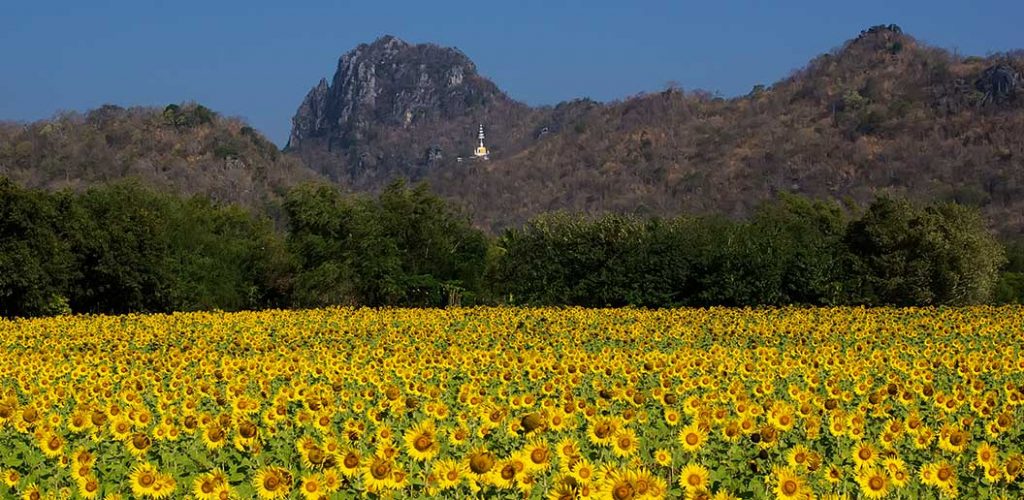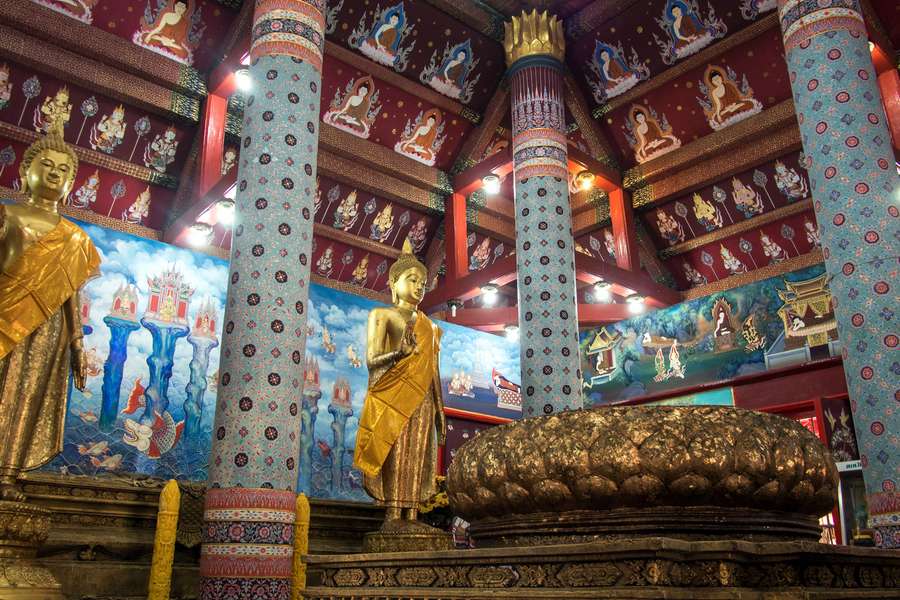With a population of about 20,000 inhabitants, Lopburi is a quiet town located in central Thailand, only a two hour drive from Bangkok. While it is small, it’s a good place to monkey around—no, you heard me, right. The old town is famous for its monkeys, especially the Monkey Temple where they run amok. You’ll find them everywhere: napping on Buddha statues in ruined temples, watching you from rooftops and holding up traffic while they cross the streets in mobs. The old town is one of Thailand’s oldest occupied cities and if you look past those cheeky little monkeys, you’ll find some amazing things to do in Lopburi.
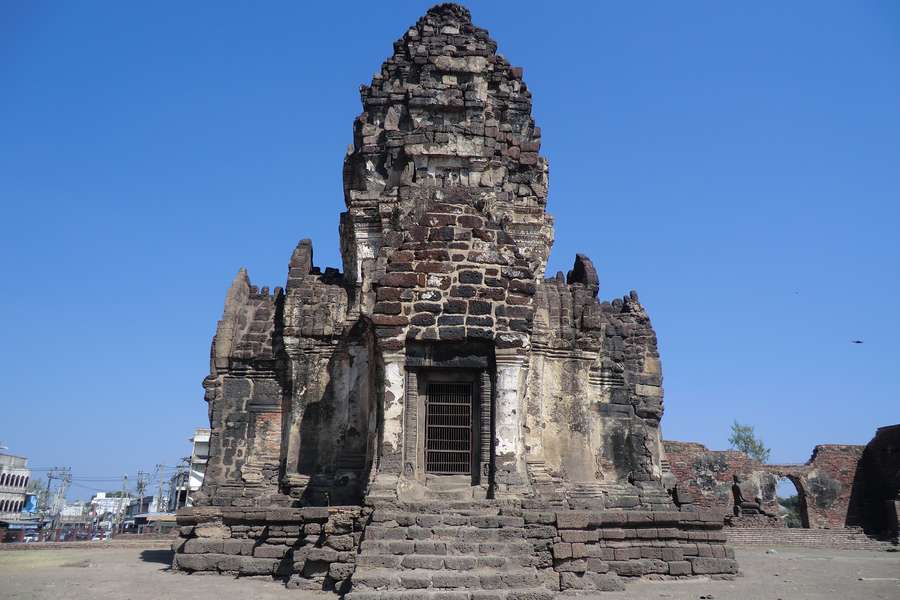 Set in the province’s far southern reaches, Lopburi town is closely related to other ancient cities in the Chao Phraya River basin, such as Singburi, Ang Thong, Suphanburi and Ayutthaya. Defined by flowing waterways and fertile paddies, this general area was a cradle of Mon/Khmer and later Siamese/Thai civilizations stretching back well over a thousand years. Once called Lavo (or sometimes Luovo or Lavapura), the name is supposedly an allusion to the ancient name of Lahore in modern Pakistan. Supposedly, the settlers of Lopburi were originally from that region. Archaeological evidence suggests that the area has been settled since Neolithic time.
Set in the province’s far southern reaches, Lopburi town is closely related to other ancient cities in the Chao Phraya River basin, such as Singburi, Ang Thong, Suphanburi and Ayutthaya. Defined by flowing waterways and fertile paddies, this general area was a cradle of Mon/Khmer and later Siamese/Thai civilizations stretching back well over a thousand years. Once called Lavo (or sometimes Luovo or Lavapura), the name is supposedly an allusion to the ancient name of Lahore in modern Pakistan. Supposedly, the settlers of Lopburi were originally from that region. Archaeological evidence suggests that the area has been settled since Neolithic time.
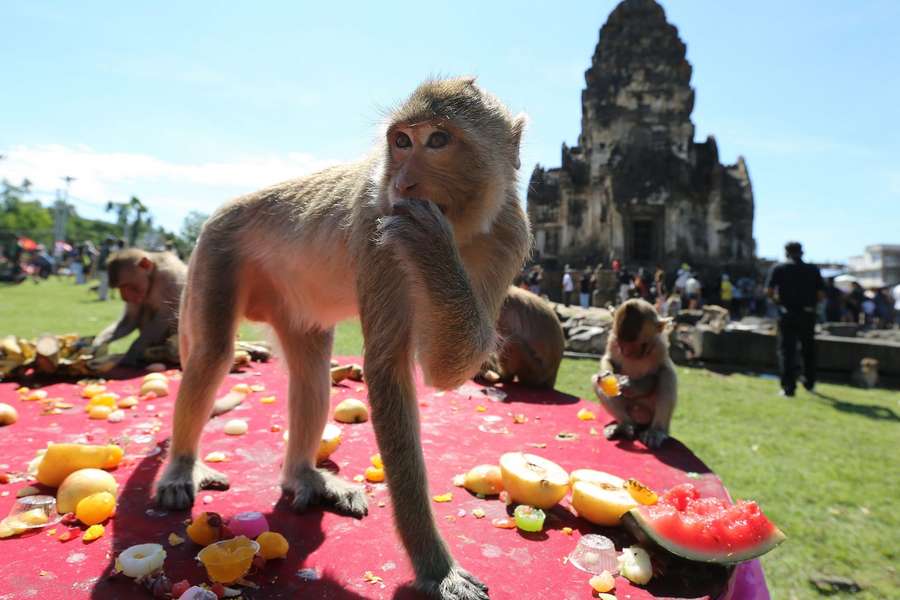 When the Khmer Empire absorbed the kingdom in the tenth century, it gave birth to the most ancient structures in the city such as Prang Sam Yod (the aforementioned Monkey Temple) and Prang Kaek. Dating back to the thirteenth century, the Monkey Temple is the most famous attraction in Lopburi. It’s also totally overrun with monkeys, and it’s in this area that the town’s annual monkey festival happens in November each year — the locals hold a banquet for the monkeys, with a buffet of food laid out on tables for them to feast on. This quirky festival also includes parades, folk performances and plenty of monkeying around. Just across the road from the Monkey Temple is the San Phra Kan shrine where giant mounds of bananas are given as “tribute” to the awaiting monkeys.
When the Khmer Empire absorbed the kingdom in the tenth century, it gave birth to the most ancient structures in the city such as Prang Sam Yod (the aforementioned Monkey Temple) and Prang Kaek. Dating back to the thirteenth century, the Monkey Temple is the most famous attraction in Lopburi. It’s also totally overrun with monkeys, and it’s in this area that the town’s annual monkey festival happens in November each year — the locals hold a banquet for the monkeys, with a buffet of food laid out on tables for them to feast on. This quirky festival also includes parades, folk performances and plenty of monkeying around. Just across the road from the Monkey Temple is the San Phra Kan shrine where giant mounds of bananas are given as “tribute” to the awaiting monkeys.
A folktale holds that the mythical King Rama gifted the city to Hanuman, the noble monkey warrior and “son of the wind” who helped Rama rescue his wife Sita in the Ramayana epic. Today the line between “venerable descendants of Hanuman” and “mischievous pests” is a thin one. While generally docile and used to humans, the simians do occasionally bite, especially if a mother feels that her babies are under threat. They also hang from power cables and scamper over the train tracks that run straight through the old town. Keep food and valuables secure when you’re out and about — it’s all fun and games until one of them creeps up your back and dashes off with your camera.
Temple enthusiasts might venture south over the border into Saraburi province to explore the ornate Wat Phra Phutthabat, or strike west into tiny Singburi to see ancient reliefs at Wat Lai and a 46-metre-long reclining Buddha image at Wat Phra Non Chaksi. There’s also Wat Khao Wongkot, a forest temple with a large bat cave located 20 kilometres north of Lopburi town
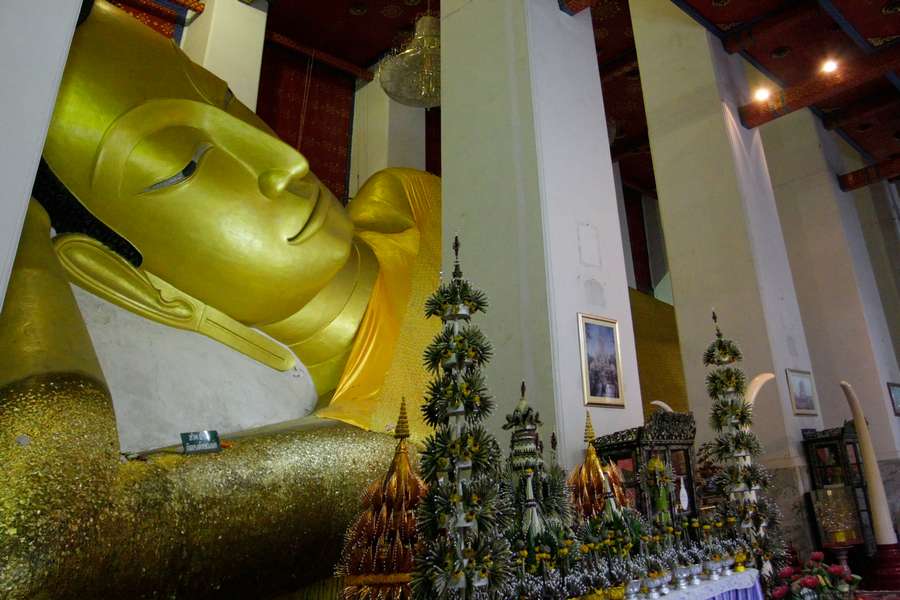 Lopburi is easily accessible by bus and train and is on the main railway line that runs between Bangkok and Chiang Mai. It’s about 2.5 hours from Bangkok or an hour from Ayutthaya. Most of the ruins and attractions are located near the train station such as Wat Phra Sri Rattana Mahathat. The 12th century compound was built during the rule of the Khmer Empire and it is truly an impressive site worth visiting. The entrance fee is currently 50 baht. Lopburi’s most famous ruins and attractions are in a compact area and you can easily take them all in within a day, and most people recommend going on a Wednesday which is when the local night market is set up as well. Packed with locals shopping and buying delicious food such as roti, pad thai and massaman curry, even plaa salid tôrd (deep-fried salted fish), a local favorite.
Lopburi is easily accessible by bus and train and is on the main railway line that runs between Bangkok and Chiang Mai. It’s about 2.5 hours from Bangkok or an hour from Ayutthaya. Most of the ruins and attractions are located near the train station such as Wat Phra Sri Rattana Mahathat. The 12th century compound was built during the rule of the Khmer Empire and it is truly an impressive site worth visiting. The entrance fee is currently 50 baht. Lopburi’s most famous ruins and attractions are in a compact area and you can easily take them all in within a day, and most people recommend going on a Wednesday which is when the local night market is set up as well. Packed with locals shopping and buying delicious food such as roti, pad thai and massaman curry, even plaa salid tôrd (deep-fried salted fish), a local favorite.
In the seventeenth century, King Narai revived Lopburi’s fortunes when, according to some accounts, western colonialists appeared to threaten Siam. He rebuilt many of the old temples and created a large palace in the city. The city faded into obscurity until King Rama IV rebuilt the old palace as the Phiman Mongkut Pavilion a century later. Next to King Mongkut’s residence is the Chantra Paisan Pavilion. This temple-like building was originally built by King Narai and used as his audience hall before the Suttha Sawan Pavilion was completed. Today, the buildings constructed and renovated by King Mongkut now house the collections of the King Narai National Museum. The Somdet Phra Narai National Museum is closed on Mondays and Tuesdays but when open, visitors pay an entrance fee of 150 baht to view an extensive collection of antiquities, with a special emphasis on the “Lopburi” period of Khmer inspired art and architecture. The palace grounds play host to an annual fair usually held around Makha Bucha day, which generally falls in February.
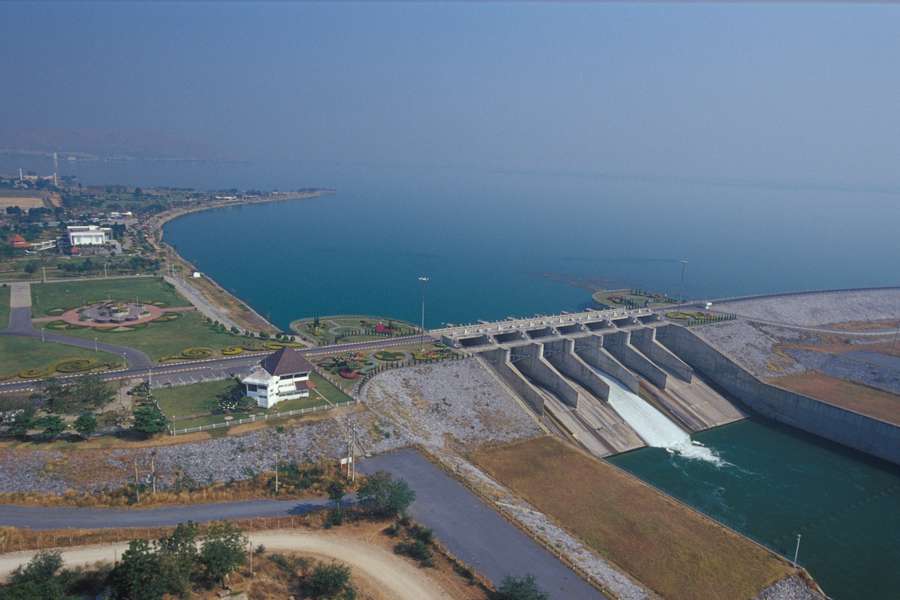 About 40 km east of the ancient city, in Phatthana Nikorn district lays some of the biggest sunflower fields of Thailand that blossom between November and January. One of the largest stretches are at the foot of Khao Chin Lae, a 240-metre-high limestone massif festooned with more than 40 rock climbing routes. Vast fields of commercially grown sunflowers have proved a popular weekend day trip. The district also hosts a relatively new tourist attraction—a beautiful fern garden (Rai Sap Prayun). And on the way, don’t miss out on the Pa Sak Jolasid Dam. Earning the title of the largest reservoir in Thailand’s central region, Pa Sak Jolasid Dam was erected as part of the Maenam Pa Sak Royal Development Project, a royal initiative by His Majesty King Bhumibol. The State Railway of Thailand operates a special route to and from Bangkok-Pa SakJolasid Dam every Saturday, Sunday and public holiday. The railway leads to Pa Sak Basin Museum and a scenic lookout point above the dam. It is highly recommended to take the train in the cooler season between November and January. The train runs daily from 7.30 AM to 6.30 PM. The fare is 25 baht for adults and 10 baht for children.
About 40 km east of the ancient city, in Phatthana Nikorn district lays some of the biggest sunflower fields of Thailand that blossom between November and January. One of the largest stretches are at the foot of Khao Chin Lae, a 240-metre-high limestone massif festooned with more than 40 rock climbing routes. Vast fields of commercially grown sunflowers have proved a popular weekend day trip. The district also hosts a relatively new tourist attraction—a beautiful fern garden (Rai Sap Prayun). And on the way, don’t miss out on the Pa Sak Jolasid Dam. Earning the title of the largest reservoir in Thailand’s central region, Pa Sak Jolasid Dam was erected as part of the Maenam Pa Sak Royal Development Project, a royal initiative by His Majesty King Bhumibol. The State Railway of Thailand operates a special route to and from Bangkok-Pa SakJolasid Dam every Saturday, Sunday and public holiday. The railway leads to Pa Sak Basin Museum and a scenic lookout point above the dam. It is highly recommended to take the train in the cooler season between November and January. The train runs daily from 7.30 AM to 6.30 PM. The fare is 25 baht for adults and 10 baht for children.
 Other than that brave monkey leaning through your window (if you’re not careful), Lopburi is still a tranquil old town. You’ll find that apart from a couple of must-see attractions, part of Lopburi’s charm lies in walking around and spotting ancient ruins popping up unexpectedly throughout the town — on the other side of the river, on a traffic island, you name it.
Other than that brave monkey leaning through your window (if you’re not careful), Lopburi is still a tranquil old town. You’ll find that apart from a couple of must-see attractions, part of Lopburi’s charm lies in walking around and spotting ancient ruins popping up unexpectedly throughout the town — on the other side of the river, on a traffic island, you name it.


